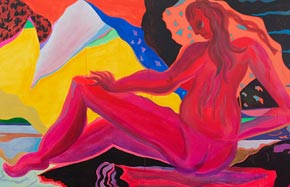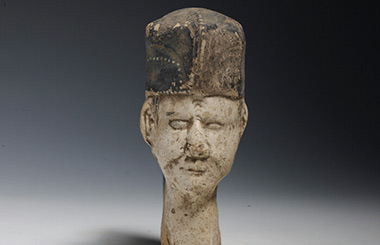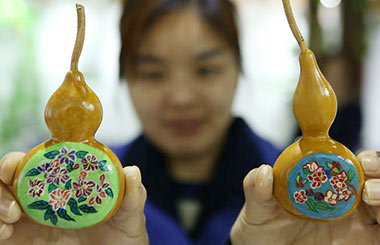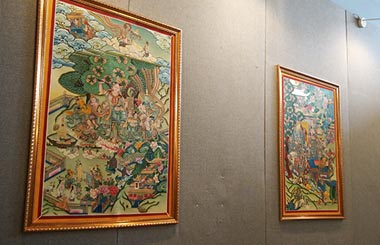Artistic tribute
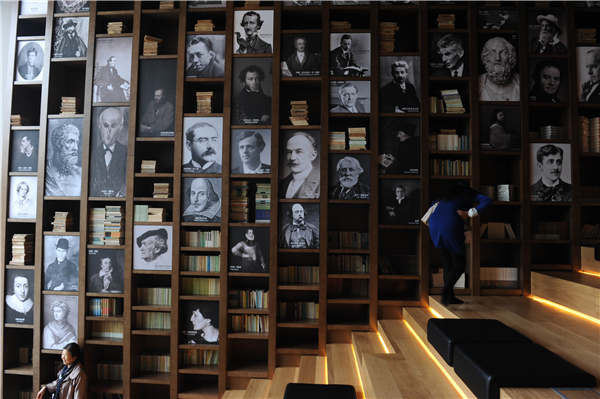 |
|
After careful selection, the museum has put on show 100 paintings and 50 copies of manuscripts of different time periods from Mu Xin's life. He left behind a total of 600 pieces of paintings and thousands of manuscripts. |
"After seeing so many things about him, naturally I want to read his works to know about him," Tang, 19, says.
Cheng Zhi and Zhou Yuwen, from Shanghai, are sitting on a cushion laid on the big steps on the second floor. It is a space where light can shine directly through the louvers of the French sash windows facing the lake, just beside the dimly lit room where Mu Xin's bold manuscripts that he wrote in jail are on display.
"When you walk through the exhibition of the Manuscript in Jail, you see in the dark room the shockingly small characters densely written on paper, you can feel his eagerness to write out the sentences that were running in his hot blood, and the great pain, depression and maybe desperation he was suffering in jail," Zhou says.
"But at the end of the exhibition and the dark room, you see light and hope, so naturally you will turn into this quiet room. And when you get in, you see the water, light and the grand theater - you see the beauty of nature and human life."
It is the second time for them at the museum. In May, they took a quick look around the place, but as interior designers, it was the architecture itself that made them eager for a second visit.
"This is the best architecture in Xizha, judging from the structure and the interior design. We are very glad to have it here. It adds a different cool artistic quality to the generally commercialized area," Cheng says.


